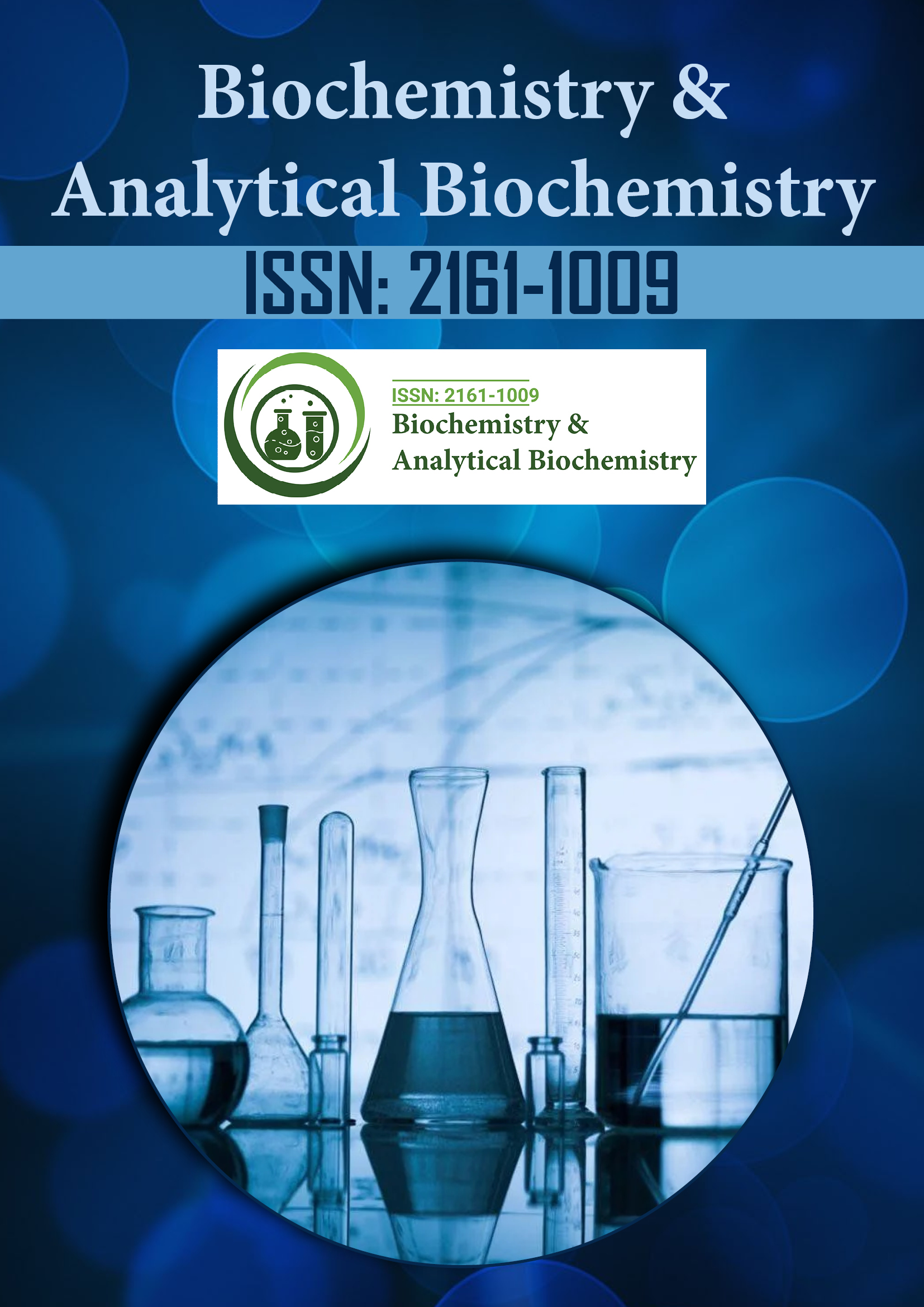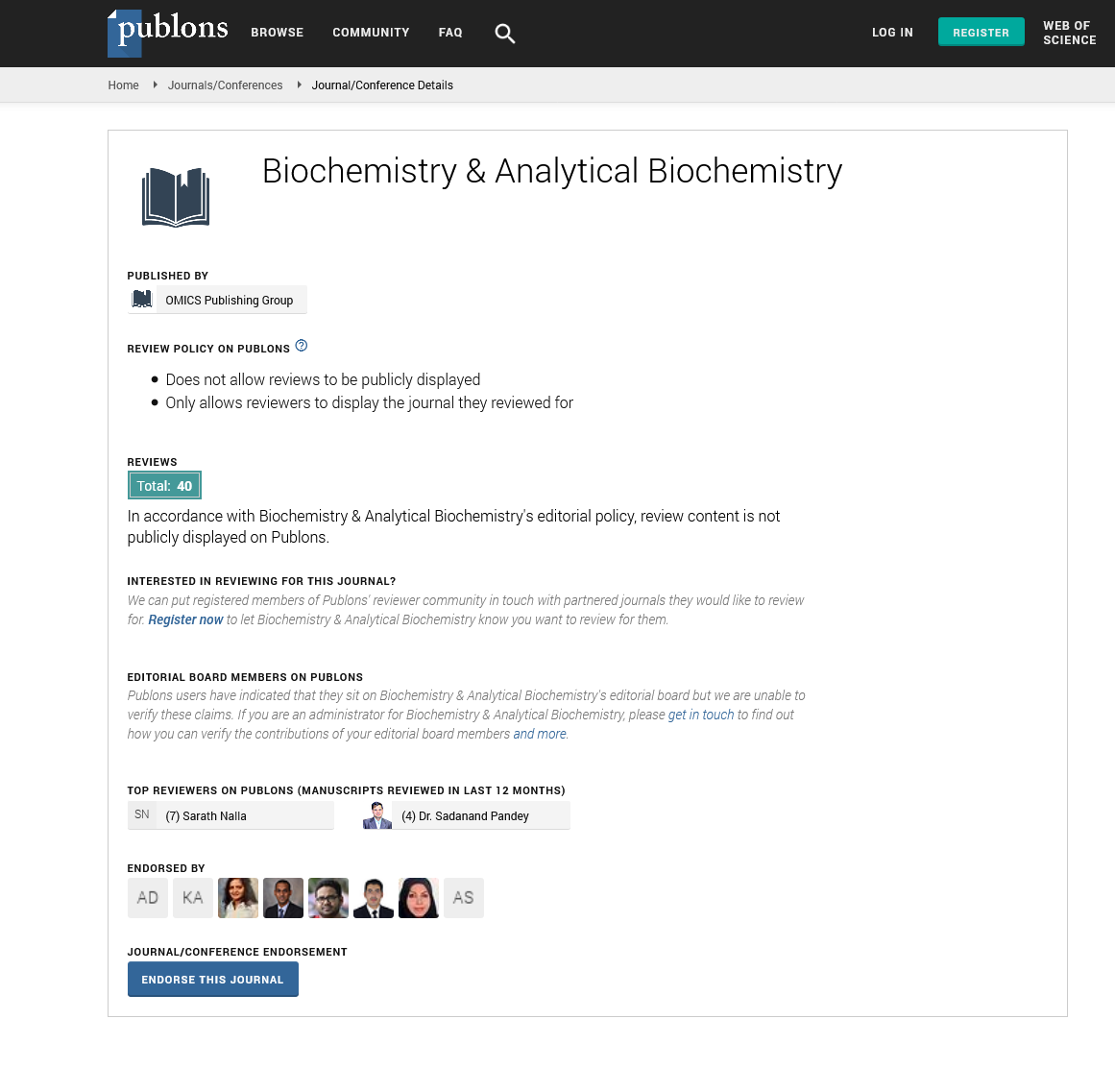Indexed In
- Open J Gate
- Genamics JournalSeek
- ResearchBible
- RefSeek
- Directory of Research Journal Indexing (DRJI)
- Hamdard University
- EBSCO A-Z
- OCLC- WorldCat
- Scholarsteer
- Publons
- MIAR
- Euro Pub
- Google Scholar
Useful Links
Share This Page
Journal Flyer

Open Access Journals
- Agri and Aquaculture
- Biochemistry
- Bioinformatics & Systems Biology
- Business & Management
- Chemistry
- Clinical Sciences
- Engineering
- Food & Nutrition
- General Science
- Genetics & Molecular Biology
- Immunology & Microbiology
- Medical Sciences
- Neuroscience & Psychology
- Nursing & Health Care
- Pharmaceutical Sciences
Opinion Article - (2025) Volume 14, Issue 1
The Biochemistry of Aging: Senescence as a Programmed Metabolic Response
Elina Rasmussen*Received: 03-Mar-2025, Manuscript No. BABCR-25-28838; Editor assigned: 05-Mar-2025, Pre QC No. BABCR-25-28838 (PQ); Reviewed: 19-Mar-2025, QC No. BABCR-25-28838; Revised: 26-Mar-2025, Manuscript No. BABCR-25-28838 (R); Published: 02-Apr-2025, DOI: 10.35248/2161-1009.25.14.571
Description
Aging has traditionally been viewed as a passive, entropic decline—a wear-and-tear process driven by accumulated molecular damage, stochastic DNA mutations and the progressive failure of cellular systems. However, emerging research in the fields of biochemistry and systems biology suggests a more radical perspective: that aging is, at least in part, a regulated, metabolically encoded process not unlike development—orchestrated by conserved signaling and energy-sensing pathways. I propose that it is time to reevaluate aging not merely as biological decay but as a programmed metabolic response to internal and external stimuli, modifiable through biochemical intervention.
This reframing challenges the long-dominant damage theory of aging, which attributes senescence primarily to Reactive Oxygen Species (ROS)-induced DNA and protein damage. While oxidative stress undeniably plays a role, its contribution is likely overstated. Many long-lived organisms, including certain bats and mole rats, maintain high oxidative loads without rapid aging. Conversely, antioxidant supplementation in humans has failed to significantly extend lifespan. These inconsistencies imply that aging is not simply the result of unchecked damage, but perhaps a regulated metabolic shift, where the body prioritizes maintenance and survival strategies differently at various life stages.
One of the most compelling pieces of evidence supporting this perspective is the conservation of aging-related pathways across species. The insulin/IGF-1 signaling pathway, the mTOR pathway and the AMPK and sirtuin families of proteins are deeply conserved from yeast to humans. These pathways act as nutrient and energy sensors, modulating metabolism, autophagy, protein synthesis and mitochondrial function in response to environmental cues. When downregulated through caloric restriction, mTOR inhibition, or pharmacologic mimetics like rapamycin and metformin, these pathways extend lifespan in virtually every model organism tested. The consistency of this effect points to an evolutionarily embedded metabolic program that influences lifespan.
Furthermore, recent studies suggest that epigenetic reprogramming plays a central role in aging. DNA methylation clocks such as Horvath’s clock can accurately predict biological age across tissues and individuals, implying a regulated change in gene expression over time. These methylation patterns do not appear random, but rather, they follow conserved trajectories, influenced by inflammation, nutrient availability and mitochondrial function. If aging were purely stochastic, these clocks would not work. Instead, they support the notion that aging is written into the biochemistry of the cell and modulated by known signaling systems.
Another striking example is the Senescence-Associated Secretory Phenotype (SASP), a pro-inflammatory state adopted by aged or damaged cells. SASP secretion is not merely a side effect of damage; it involves active transcriptional reprogramming via NF-κB and p53, leading to changes in the extracellular environment, immune cell recruitment and tissue remodeling. In development and wound healing, similar signaling occurs transiently and purposefully.
From this angle, aging may represent a series of biochemical decisions made by cells in response to chronic nutrient signaling, DNA damage and metabolic imbalance. In a nutrient-rich environment, constant mTOR activation promotes growth and inhibits autophagy, accelerating the accrual of damaged proteins and organelles. In contrast, under caloric restriction or intermittent fasting, cells switch to maintenance mode, enhancing DNA repair, protein turnover and mitochondrial efficiency. These switches are governed not by randomness, but by molecular logic that biochemistry can decode and, potentially, manipulate.
If we accept aging as a partially programmed metabolic state, this opens new avenues for therapeutic intervention. Instead of merely trying to “clean up” the damage of aging, we could focus on reprogramming the aging process itself—tuning the cellular machinery to favor longevity and repair over growth and inflammation. Already, interventions such as NAD+ boosters, senolytics and metabolic modulators are being tested for their ability to reset the aging clock. Success in these areas would not only delay age-related disease but improve overall quality of life.
This shift in perspective also has philosophical implications. Aging has long been regarded as an unavoidable consequence of time. But if it is at least partially programmable, then perhaps lifespan is not predetermined, but conditional—dependent on how we nourish, stress and challenge our cellular biochemistry. Such a view reintroduces agency into the aging process, suggesting that through metabolic literacy and molecular precision, we may extend health span and vitality in ways once considered science fiction.
Citation: Rasmussen E (2025). The Biochemistry of Aging: Senescence as a Programmed Metabolic Response. Biochem Anal Biochem. 14:571.
Copyright: © 2025 Rasmussen E. This is an open access article distributed under the terms of the Creative Commons Attribution License, which permits unrestricted use, distribution, and reproduction in any medium, provided the original author and source are credited.

